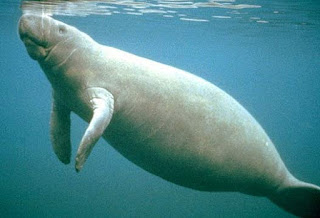Tuesday, May 30, 2017
4 Animals We Ate To Extinction
4 Delicious Animals We Charbroiled Into Extinction - and 1 That Tasted Nasty But We Killed It Anyway
"Good to the last drop" proved to be a great slogan for Maxwell House coffee. But the "Good to the last existing representation of the species" tagline hasn't worked so well for these delectable creatures. Here are four animals that prove that slow and tasty never wins the race.
The Dodo
Bigger than turkeys and more naive than happy taxpayers, the dodo [wiki] didn't exactly have the best survival strategy on the block. Consider the evidence. Not only was the dodo a flightless bird, it also had tiny wings, a small tuft of curly feathers on its bum, and it laid only one egg a year. It's no wonder European sailors who landed on the shores of Mauritius in the early 16th century got a big laugh out of the clumsy bird, which, in addition to its previously lamented attributes, had absolutely no fear of man. The sailors also got quite a few meals out of the aves, even though they were said to be close to inedible (Dutch settlers called them walgvogel, or "disgusting bird"). No matter. Pigs, rats, and monkeys introduced to the island helped man kill off the bird by 1681. Which is why there aren't any Kentucky Fried Dodos today.
The Sea Cow
They were big, slow, tasty, and defenseless, all of which is a bad combination around a slew of hungry humans. A cold-water relative of the manatee and dugong, the sea cow was discovered by Europeans in 1741 when the explorer Vitus Bering and his crew were shipwrecked in the area between Siberia and Alaska. And since the adventurous lot couldn't really explore the land, they took to exploring their palate. Our shipwrecked gourmands quickly discovered that sea cow [wiki] meat tasted like veal and remained fresh for a surprisingly long time. And there was a lot of meat, too, since the beast reached as much as 26 feet in length and weighed up to 8 tons. They resembled a modern manatee, with looks like your mother-in-law - if your mother-in-law has big expressive brown eyes, a small head, external ears the size of peas, and bristling whiskers. Estimates are that only about 20% of the sea cows shot or harpooned were actually caught, but they all died. By 1768, the gentle, delicious beasts were naught but lip-smacking memories.
The Great Auk
Rich in protein, chock-full of nutritious fats and oils, and great for baiting fishhooks, this flightless seabird was, well, great. Found on the rocky islands and coastal areas on both sides of the North Atlantic, great auks [wiki] were like a somewhat smaller version of the dodo, and they had brains to match. Starting in the early 16th century, sailors began marching the clueless creatures up the gangplank and pushing them into the ship's hold by the hundreds. Unlike the dodo, however, the auk was considered great grub, and the tasty bird was hunted for its feathers, skin, and eggs to boot. Unfortunately, you'll never get to feast on the great auk's tender meat, and you have your European brothers to thank for it. The last pair was killed on an island off the coast of Iceland back in 1844.
The Passenger Pigeon
The naturalist John James Audubon once reported seeing a flock of passenger pigeons [wiki] so numerous, it took three days for them to fly over. And he wasn't exaggerating. In the early part of 19th century, the birds, which were slightly larger than mourning doves, were estimated to make up as much as 40% of North America's entire avian population. But the abundance of the creatures made them easy marks. Effortlessly hunted, the birds were mowed down mostly for food but occasionally for sport, which some "sportsman" bagging as many as 5,000 in a day. In fact, the bird filled entire train boxcars as they were shipped to markets in eastern cities. Unable to sustain themselves except in large flocks, the pigeons dwindled rapidly. In 1900, a 14-year-old boy shot the last wild passenger pigeon (boys will be boys). Fourteen years later, the last one in captivity died at the Cincinnati Zoo. Her name was Martha.
Subscribe to:
Post Comments (Atom)
















No comments:
Post a Comment